How technical translation turns into a mini-detective
Introduce myself
I am an IT translator, occasionally - a teacher of translation.
I have been doing translations since 2006, I read Habr.com regularly, but I publish it here for the first time.
On projects, drawing technical meaning out of words, I sometimes wander to a place where translators usually don’t look. It happens that interesting stories are made up. One of them is below.
Story
So, I taught students the IT translation, we analyzed the switch device and the marketing booklet to it, we came across one interesting offer.
')
I love these - they seem to have a second bottom. The original looked like this:
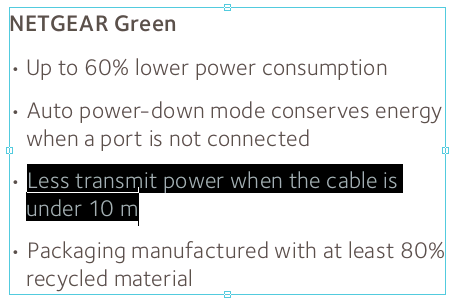
Formally, the student translators more or less coped with it:
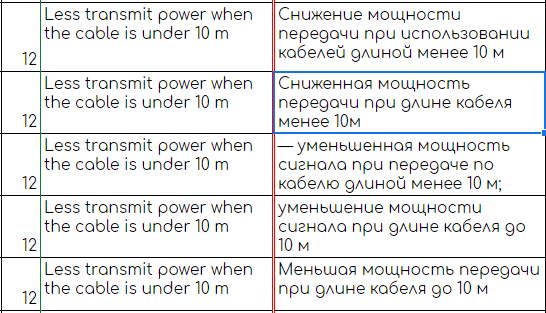
And yet I did not like the translations, I did not immediately realize why.
The first question I asked was -
How do the signal power and NETGEAR Green relate to each other?
The logic began to crumble almost immediately, since the meaning was that the manufacturer boasted not that the signal power would be less, but that with a shorter cable length the power consumption would be lower. And this already fits into the concept of NETGEAR Green .
I checked my guess, 100% hit ( https://www.netgear.ru/about/environment/environmental-information/default.aspx ):

But while I was looking for confirmation of my guess, I had another question:
“Why is it actually about 10 m? Not 5 , not 15 , not 25 , but exactly 10 ? "
Perhaps one of you will twist a finger at your temple (as one of the translator colleagues did) - and will be right in its own way:

But I'm allergic to "white spots" in the text, so I continued my search.
They led me to the Green Ethernet program, which was developed by several IEEE working groups. The results of the work of these groups eventually turned into the IEEE P802.3az Energy Efficient Ethernet standard (materials and reports can be found here - http://www.ieee802.org/3/az/public/index.html ).
Here's how it all began ( https://www.researchgate.net/publication/224189701_IEEE_8023az_The_road_to_energy_efficient_Ethernet/download ):
IEEE 802 Working Group in July 2005. This was a tutorial for many people who followed the meeting. IEEE 802.3 IEEE (CFI). In November 2006, a CFI vote was given. The first meeting of the EEE Study Group was held in January 2007.
There were a lot of committees; there were even more proposals to improve the efficiency of switches — basically, they were aimed at optimizing ports — de-energizing inactive, taking them to sleep, working in different power modes, depending on the data transfer rate, optimizing switching power consumption speeds.
It's funny, but I didn’t find a single report on the link above that would concern cable lengths, although both Cisco and D-Link refer to the work of this group and this standard.
Cisco specifically announced the Short-Reach Mode option ( https://www.cisco.com/assets/sol/sb/Switches_Emulators_v2_3_5_xx/help/250/index.html#page/tesla_250_olh/ts_port_management_09_25.html ):
Short-Reach Mode — This feature provides for a short length of cable. It has been analyzed for various cable lengths. If the cable is shipped with the cable, it is saving energy. This mode is only supported on RJ45 GE ports; it does not apply to combo ports. This mode is disabled by default.
So, the first figure appeared - 30 meters .
What does D-Link say?
In its publication, D-Link (http://www.dlinkgreen.com/greensupplychainmanagement.asp) mentions 20 meters already:
D-Link Green Technology Detects This is a cable that only needs to be used for 100-meter cables. If cable length is less than 20 meters , it can save up to 9.3% power used for each system.
It was rather strange to observe the silence on this topic of the NETGEAR company - it seems to have its own program, as we have seen, NETGEAR GREEN - and there are no details.
I caught sight of two pieces that were suggestive.
Short-Reach Mode in NETGEAR switches, it turns out, is provided ( Cisco is not alone here) .
Here is a screenshot from their guide to the switch, with more than 300 pages, where we see the mention of Short Reach Admin Mode :
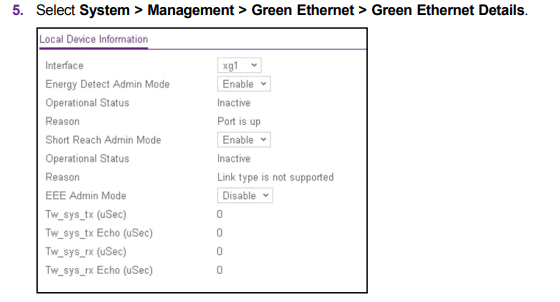
Here are the explanations from this manual:
Selective Reach Admin mode. With this mode enabled, it is less than a certain limit .
And yet the figure in the 10 m never flashed.
But where did she come from?
In the end, I came across a small report ( http://www.ieee802.org/3/NGBASET/public/jan13/WuParnaby_01a_0113_NGBT.pdf ) within the framework of the IEEE 802.3 committee (dealing with Ethernet issues), in particular there is such a slide:

Yeah, the figure in 10 m appeared - the research began with it.
It is precisely she who shows us that for transmitting a signal over a 10 m cable, 65-85% of the energy that would be required for transmission over a 100 m cable will be required.
This, by the way, opens up a veil for another translation puzzle, over which interpretation I also puzzled:

Consumption down 60% ? Or has it dropped to around 60% ?
Translating students were not unanimous either:

Well, now everything seems to be decomposed on the shelves.
Or not everything? No, not all, one question remains:
Does NETGEAR have anything to do with this 10 meter cable report?
Let's look at the title page of the report:
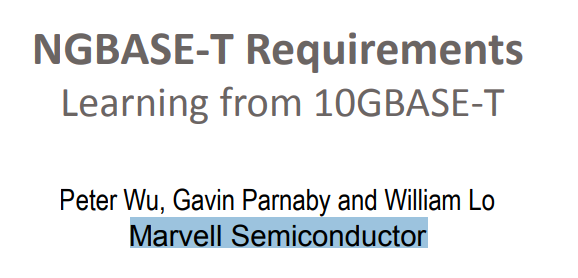
Now let's see if Margell Semiconductor is a NETGEAR supplier?
Yes! And how it is! They have been friends since at least 2003 (and the report was - for a minute - in 2013 ):
Here is the publication ( https://investor.marvell.com/news-releases/news-release-details/netgear-gsm712-gigabit-ethernet-switch-utilizing-industry ):
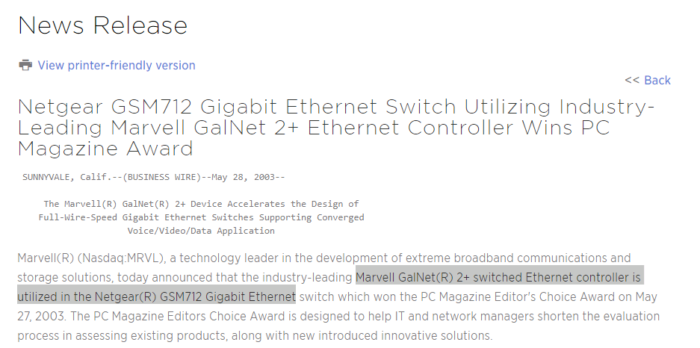
Now, exactly (as far as I can tell) , everything fell into place.
I hope it was interesting.
Respectfully,
Eugene
Source: https://habr.com/ru/post/449334/
All Articles